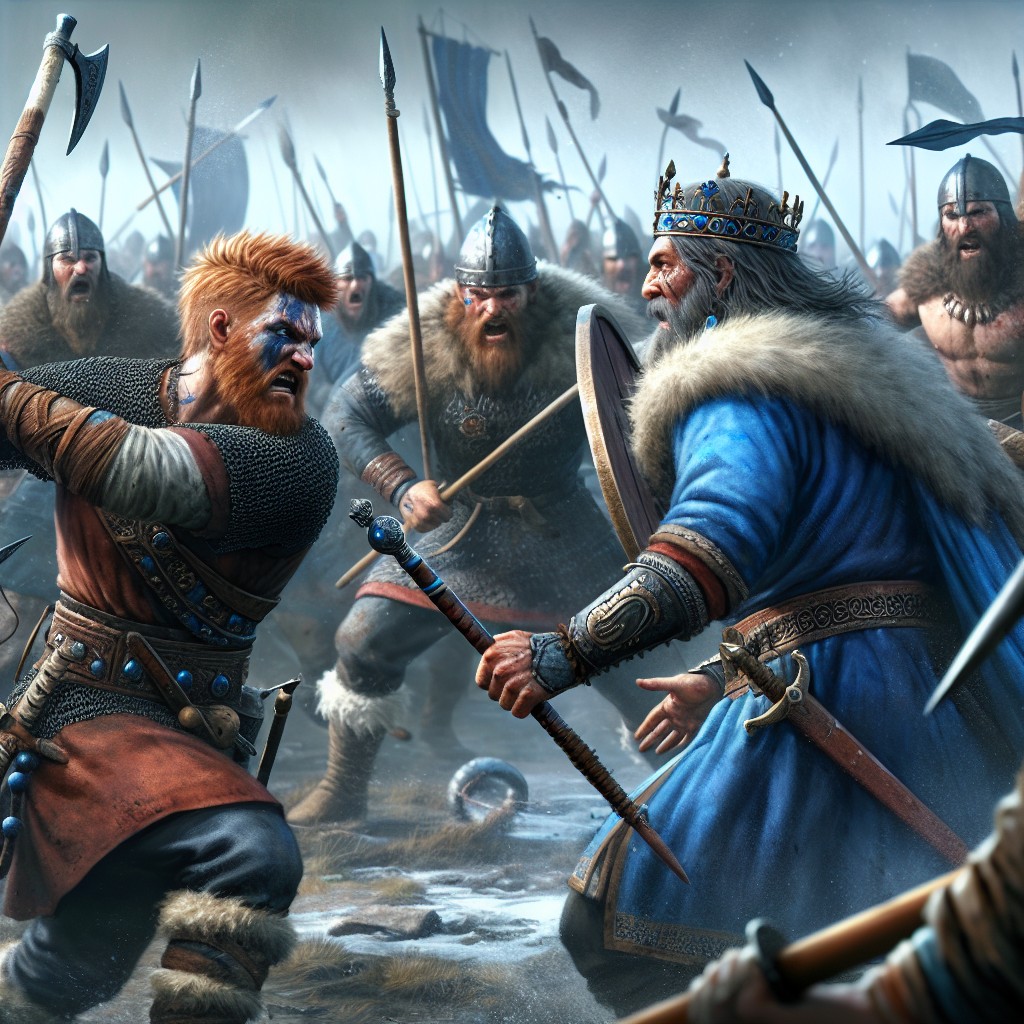The Norwegian Anti-Hero
Tore Hund and the killing of King Olaf

Tore Hund kills King Olaf the Holy - AI generated image
Thorir Hund (in Old Norse, Þórir hundr), known as "the Hound" (990 - ????), was one of the individuals who personally killed King Olaf II Haraldsson, who is now recognized as a saint and the patron of Norway. He was among the most prominent leaders of the Hålogaland district (northern Norway) and played a crucial role in the faction of farmers in Stiklestad who opposed Olaf II Haraldsson's rule. The king sought to consolidate his power over Norway by enforcing Christianization, thereby weakening the autonomy of local jarls and strengthening the central crown, which had historically struggled to exert control over independent coastal regions.
Thorir was born during the early stages of Christianity's expansion in Norway and belonged to one of the nation's most noble and influential families. A skilled Viking warrior and trader, he amassed considerable wealth through commerce, particularly with Russia and the White Sea. When Olaf arrived with the intention of unifying Norway and diminishing the power of men like him, Thorir declared war against the new king—motivated in part by personal revenge after Olaf executed his relative, Asbjørn, in 1028. Alongside other nobles, including Erling Skjalgsson and Einar Thambarskelfir (one of Norway’s finest archers), Thorir helped form an anti-Olaf faction.
Their military efforts proved successful, and with the support of King Canute the Great's army, Thorir managed to drive Olaf out of Norway in 1026. As a result, the Danish-English king appointed Thorir as his representative in Norway.
According to Snorri Sturluson's Heimskringla, during the Battle of Stiklestad in 1030, Thorir Hund delivered the fatal blow to King Olaf II, piercing his chainmail with a spear.
However, despite his apparent victory, the tides in Norway soon shifted in favor of Olaf’s son, Magnus Olafsson (later known as Magnus "the Good," King of Norway and Denmark). This forced Thorir to relinquish power, and by 1035, he disappeared from historical records. He never returned to his home in Bjarkøy; as a skilled trader, he may have ventured to Kievan Rus or sought fortune in the East.
Charles Francis Keary, Norway and the Norwegians, Scribner, 2008
Tom Shippey, Laughing Shall I Die: Lives and Deaths of the Great Vikings, Reaktion book, 2020
2025-07-20
Salvatore Ciccarello
